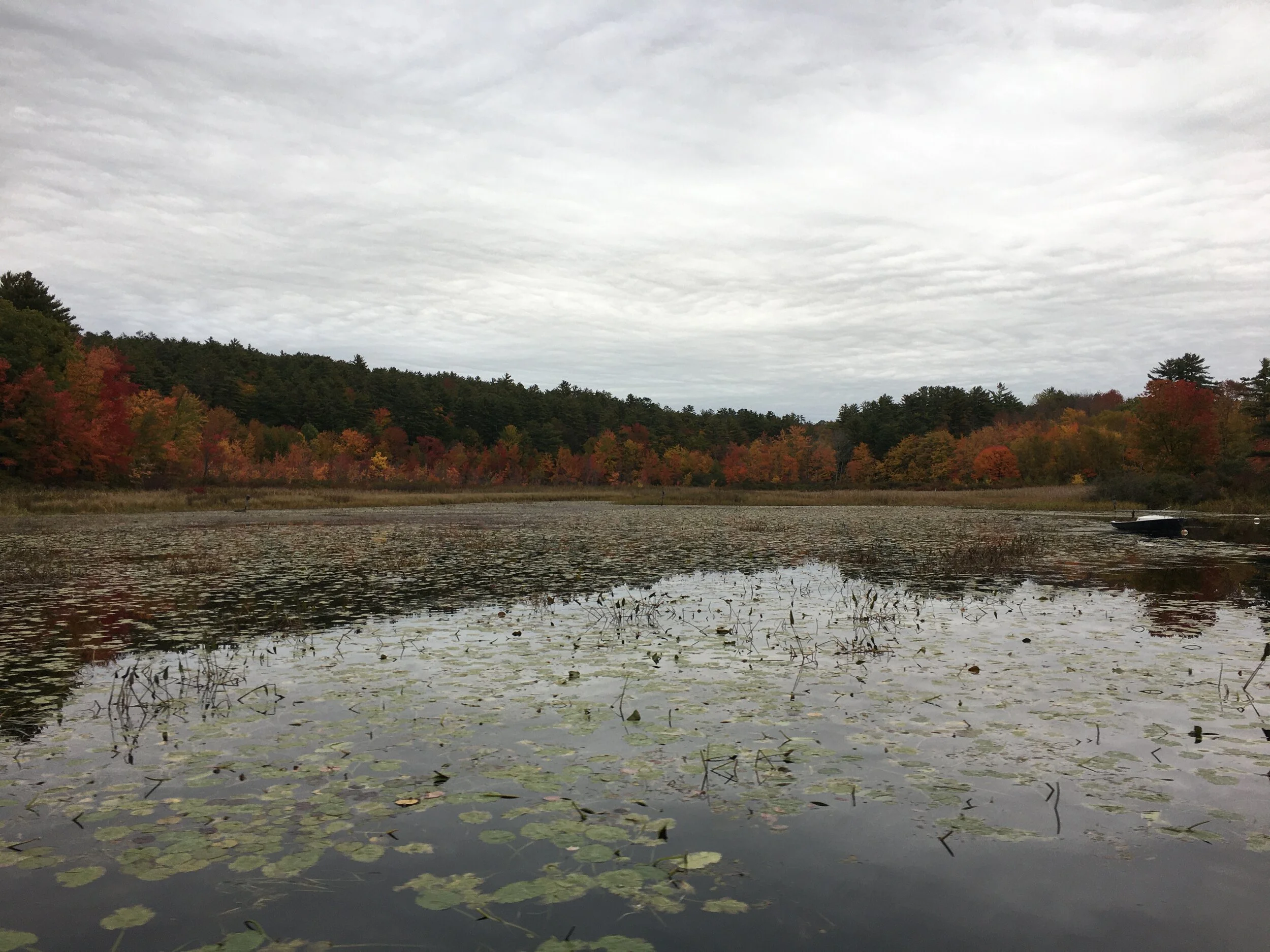I had a moment the other day, one that hits me not too infrequently, of how inordinately lucky I am. On my way back from Chamberlain Reynolds Memorial Forest I was struck dumb by the beauty of the lake, streaking across its serene, mirror-like surface, watching a pink blush creep up the sky’s horizon. It’s at times like these where I feel I want to still the world and capture it. I can see the mountains becoming brushstrokes and the palate of colors I would mix to trace the clouds in pinks and yellows. I can see the spots where I would highlight in white and spots where I would mix blacks and greys for the umbra and penumbra of passing shadows.
There are some colors in nature that make me want to get out my paints and brushes. But, try as I might to mix them, I can never quite imitate the hues the world concocts. One such color is the blueish purple of a distant mountain range. The blue tint that we see layered over the mountain’s green is really just layers of atmosphere applied between the ridges and our eyes like coats of varnish. The molecules in the air scatter and reflect blue light, which is why the sky looks blue to us. So when we look at objects in the distance we can also see the blue light in the air, like looking through a screen door. The cloudier the day, the more dense the atmosphere and the hazier the mountains. What we see as just one color is really many acting upon each other.
As the season changes it brings rise to a new, enviable color: the bright red of a crisp Autumn leaf. As many of us know, chlorophyll is the chemical plants produce that give them their green hue. When the length of daylight gets shorter, chlorophyll breaks down and we start to see the other pigments in the leaves they get from chemicals called carotenoids. The red color, however, is produced by something called anthocyanins which comes from a breakdown of sugars in the leaves. During years when there is drier weather and more sunlight leaves will have more sugars, leading to brighter reds in the falls. So that means this year, since we have had so little rain, we should be seeing ruby red leaves in the next few weeks.
Thinking about the coming of fall makes me excited for hot chocolate and apple cider, but it also makes me reflect on the summer. While I have gotten to experience many new, amazing things, there are some little things about the summers in Connecticut that I missed. Something I love to do at home is watch our backyard hummingbird feeder with my mom. Whenever one is flitting by the feeder someone will whisper to look quickly and a moment of stillness and silence follows as we all stare, giddy that they’ve decided to make an appearance. Hummingbird feathers have always fascinated me, the incandescent reds and greens decorate their bodies like metallic scales. Hummingbirds, like all birds, have melanosomes in their feathers, which produce their colors. Unlike other birds, their melanosomes contain numerous tiny air bubbles. When waves of light bounce off the surface the air bubbles cause light waves to combine with one another. This combination is known as interference and it is what produces iridescence, a shimmer to an object like the glint of a soap bubble. It is less pigment, but structure that gives hummingbirds their brilliant, flashy feathers.
The colors found in nature are so breathtaking because the world is constantly changing. The atmosphere, weather, the amount of light or the time of day can all change the way we perceive color. It is for this same reason that they are so difficult to capture. But still I always like to break down the world in paint by numbers and reflect upon what makes the reflected waves of light so unique. A stilled world, an unchanging world is a lifeless and dull one. Without change, interactions and resulting adaptations the world wouldn’t have its stunning palate.
Sam was a last minute addition to the SLA’s LRCC crew, and we’re so grateful to have her here! We appreciate her artistic talents and creative eye, expressive writing, and commitment to the baby loons. You can learn more about Sam here!


